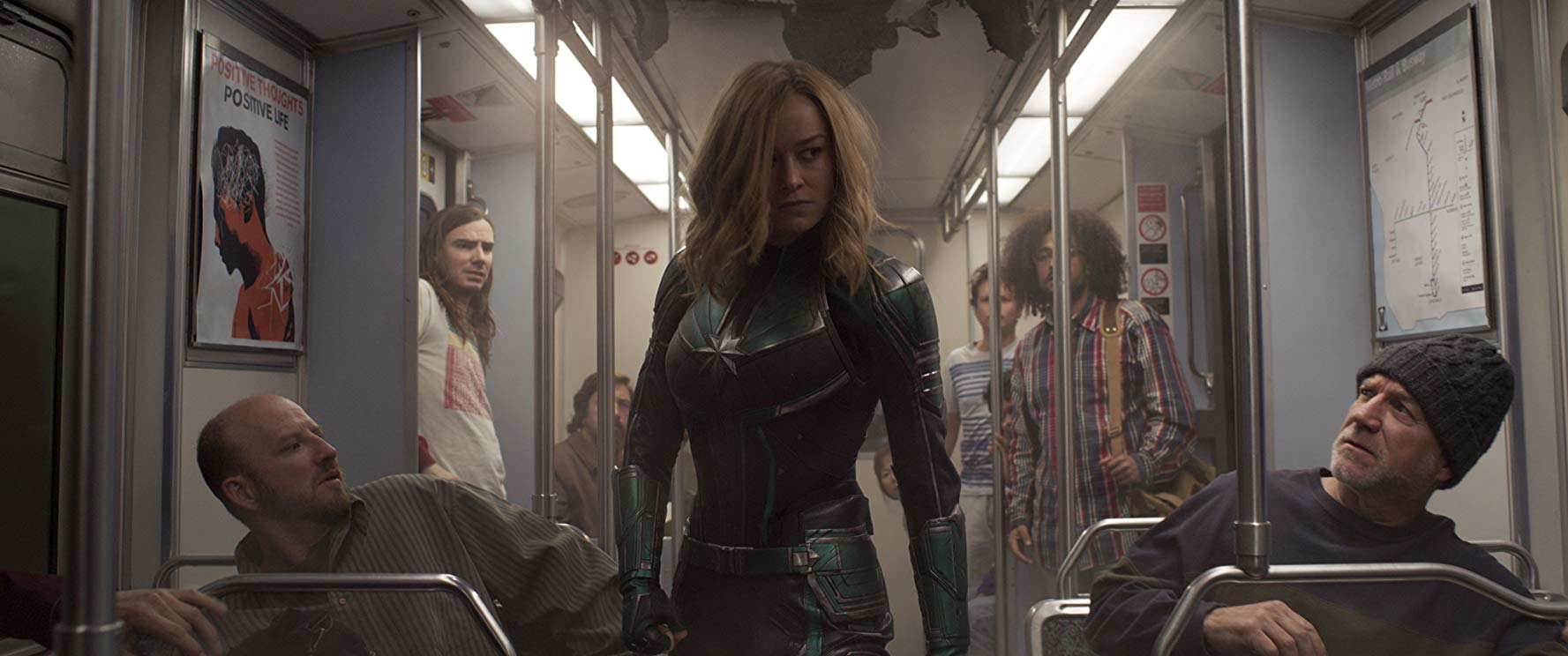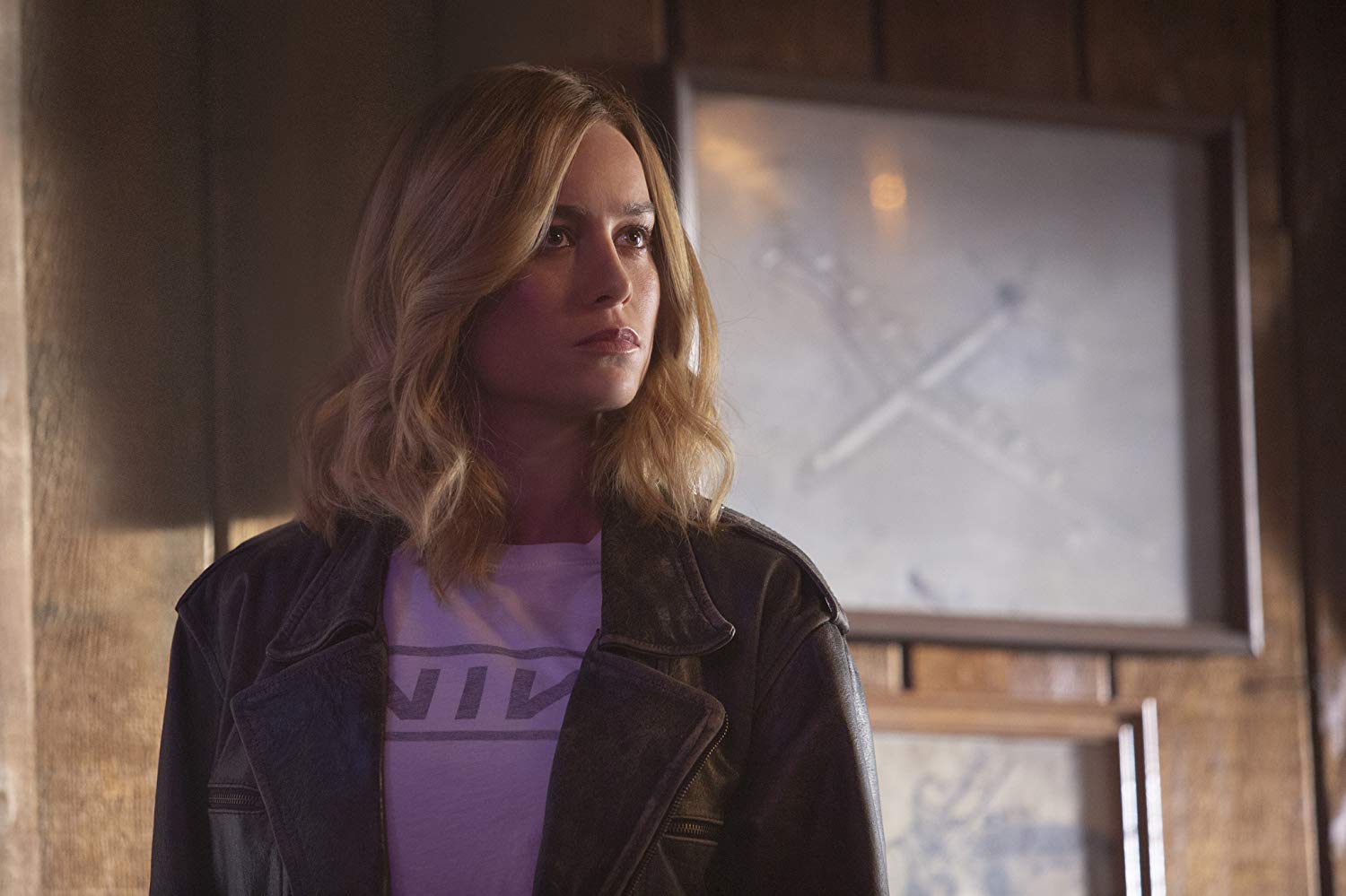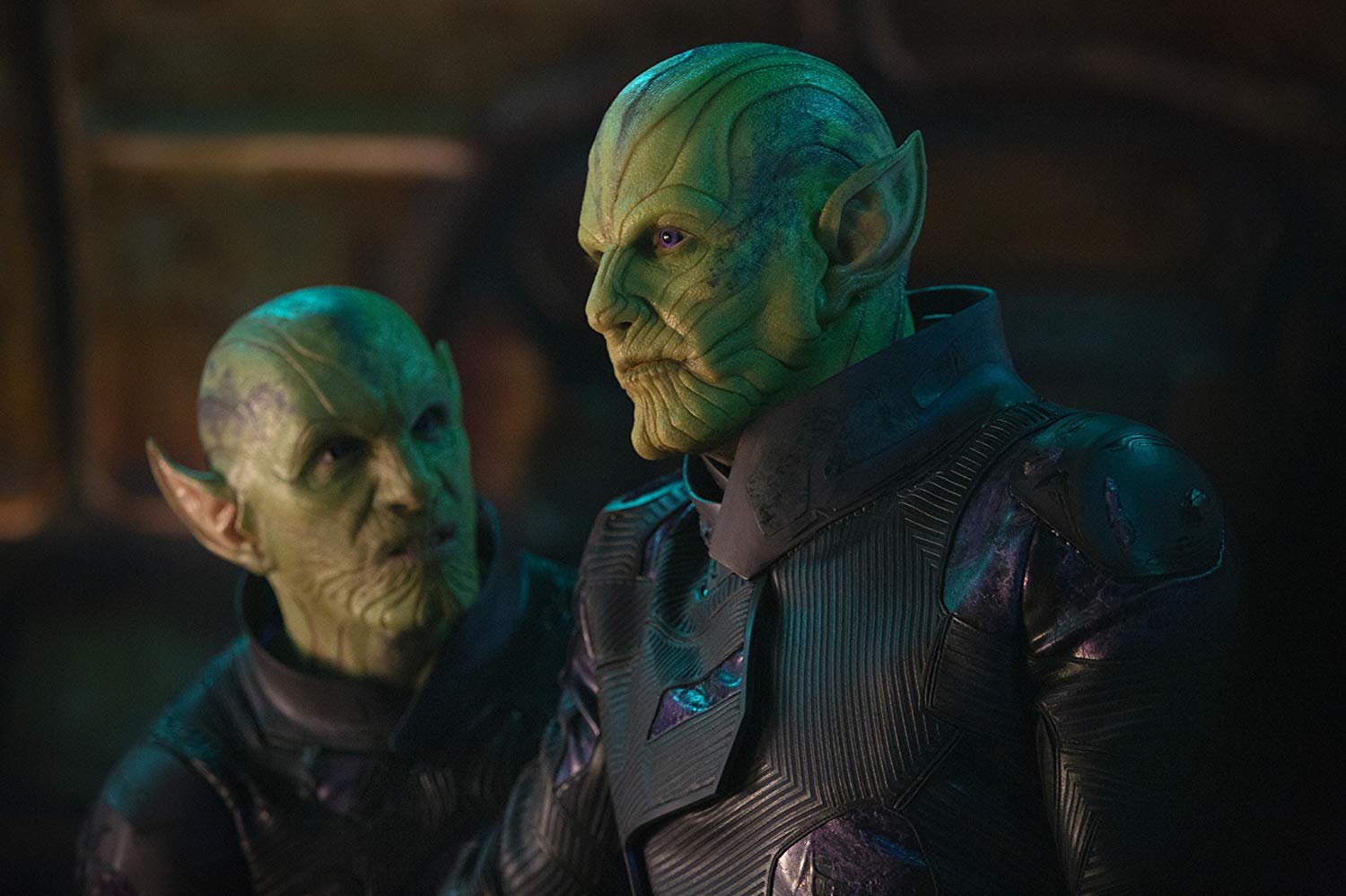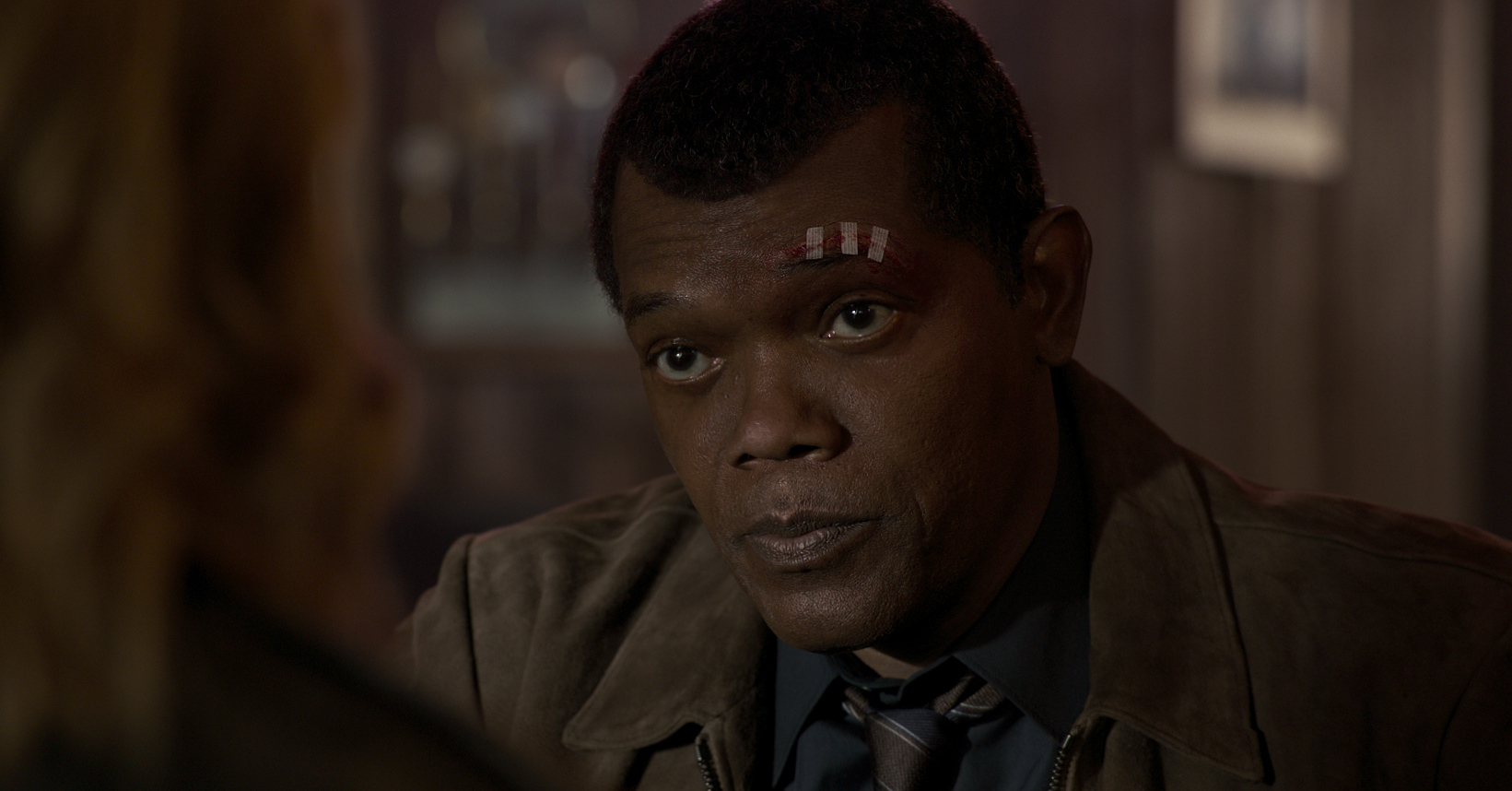Nick Fury too, but not before sending an SOS to a special someone. At the time, the now-famous pager post-credits scene received thunderous applause from comic book diehards globally. Even those who had no clue of what was going on knew that it was a scene of absolute significance. There, at the end of the line, when all hope was seemingly lost, the man who founded The Avengers Initiative sent out a signal in desperation. It was a cry for help. And on the receiving end of that signal… Captain Marvel. We know from that post-credits scene that Captain Marvel (Marvel’s first female superhero — it’s about time) would be the beacon in a world shrouded with darkness. Now, Marvel Studios had the task of showing us exactly how bright her light shines. So, before the big finale, before the Endgame, we go back in time one last time to learn about the hero that would save us all. And on that front, Captain Marvel delivers big time. At one point, we see Vers (that’s what the species known as the Kree named Carol Danvers when they took her in), hanging from her ankles in a Skrull warship. They’re prodding her brain, digging into her subconscious and examining her memories. But she manages to break free and single-handedly whoop the asses of every single one of them with relative ease and this, mind you, is before she removes the shackles that were holding her back and unleashes the fiery beast within her. We now fully understand the importance of Captain Marvel and the capacity of her powers. Thanos is chilling on hillsides, making scarecrows and admiring sunrises, unaware of what’s about to hit him. Oh, he has no idea! If Captain Marvel was a video game character, people would be screaming “imbalance” and clamouring for a new patch.
But what’s disappointing is that we don’t quite understand Carol Danvers’ goodness on a more personal level. Think about the chest-tightening scene in Captain America: The First Avenger when scrawny Steve Rogers jumps on top of a grenade to protect his peers. That moment alone tells you everything you need to know about the kind of person Steve Rogers is and the kind of hero Captain America would be. Poignant, human moments like that are fleeting in Captain Marvel (though, when it’s explored a little more towards the end with Lashana Lynch‘s character, it’s moving). But it’s tough to be overly critical of directors Anna Boden and Ryan Fleck and their team of screenwriters as one of the overarching storylines of the film is Vers figuring out her past. She’s a Kree soldier who’s unable to sleep at night because she sees glimpses of another life in her dreams. She’s confused. We don’t know who Carol Danvers is, because she doesn’t know who she is. As a result, there’s a slight disconnect between the character and the audience watching.
But it’s only a slight disconnect because Brie Larson is fantastic as the titular character. Heading into the film, there were some fans who claimed that Larson was unsuited to play the role because “she’s bland” and “lacks the charisma to embody a larger than life superhero” (I guess winning an Oscar counts for nothing in this town). Well, if you’re one of the naysayers, get ready to feel silly because Brie Larson is magnetic from start to finish. She takes what appears to be mediocre character writing and elevates it with her gravitas and screen presence. She rocks in the bigger superhero sequences (i.e. slow-mo walks, staring into the camera and just being plain old badass), she’s even better in the smaller dramatic moments. Just observe her in the scene where she’s looking through some old files and photographs in the S.H.I.E.L.D building. When Fury asks if she’s okay, she lets out a simple “uh huh” but there’s a crackle in her voice and tears in her eyes that she wouldn’t let drop. Larson makes us feel Carol Danvers/Vers’ inner pain, despite the film’s lack of character exploration.
I wish the film itself was as impactful as Brie Larson’s performance. It lacks blood pumping moments that will make you want to scream your lungs out in sheer elation (like the ‘No Man’s Land’ sequence in Wonder Woman) nor scenes that will leave you emotionally drained (I’m thinking of the climatic threeway battle in Captain America: Civil War). The mandatory hero-getting-back-up-after-falling-down sequence is present and it works, but not to the degree that will have you clenching your fists and rallying under your breath in support of our struggling hero. It’s also a problem that the film repeatedly reminds you that it’s about the ongoing war between the Kree and Skrulls, but neither of their struggles is explored in a meaningful way. The significance of defeating the Skrulls is just said, not felt and this reduces the impact of the big moment that leads into the 3rd act, dramatically. (But we can’t ignore Ben Mendelsohn as the shape-shifting villain Talos, who slowly transforms into the most interesting and nuanced character in the film.)
That said, there’s no denying just how much fun this movie is. Brie Larson and Samuel L. Jackson have excellent chemistry and their snappy back and forth banter is some of Captain Marvel‘s biggest highlights. It wouldn’t make sense considering the circumstances established, but their shared screen time begs to be spun off into a 90s quirky buddy cop-style TV series. And I’d be lying if I said the flashy, CGI heavy final battle sequence didn’t put a big fat smile on my face. Ultimately, Captain Marvel had to do two things: One, it needed to introduce us to a new hero and two, convince us that she could go 12 rounds in the ring with Thanos. The film accomplished both. I said it once, I’ll say it again: Thanos is screwed.
Rating: 3/5



